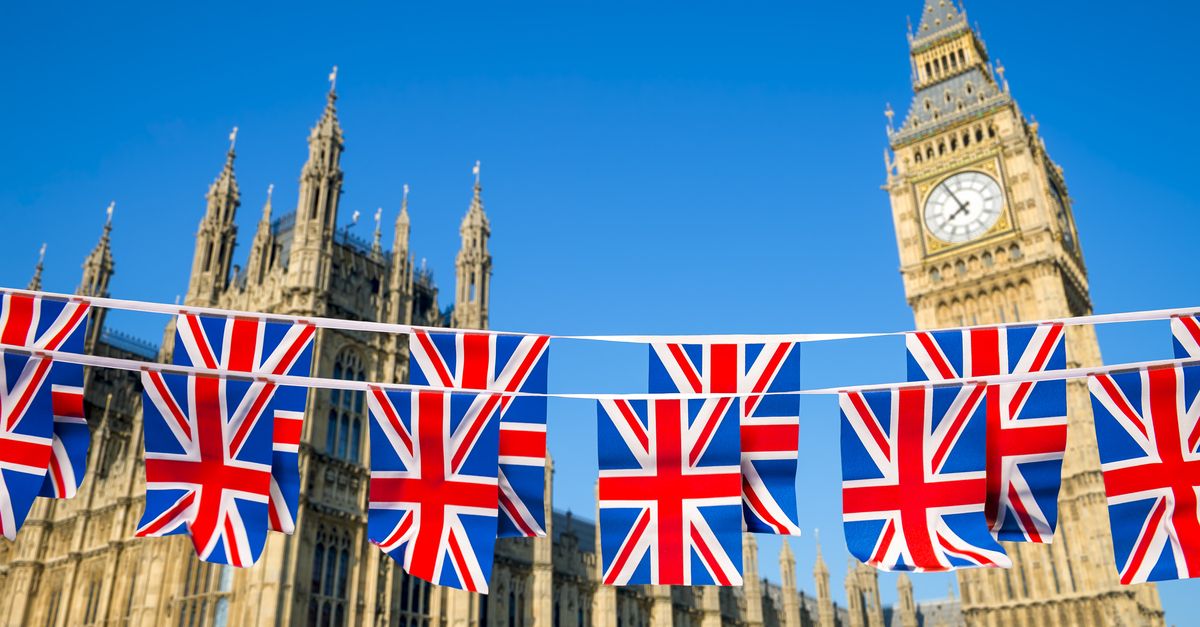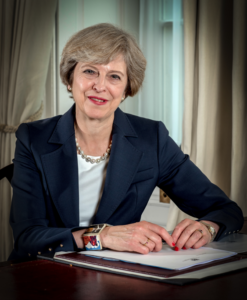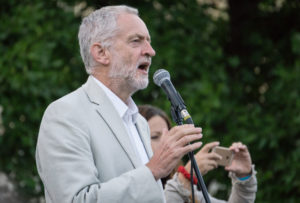Voters in the UK go to the polls on 8 June 2017 in the second general election in just over two years, after a dramatic campaign marked by major terrorist attacks in Manchester and London, crucial Brexit negotiations looming, and the possibility of what would be an upset of historic proportions.
This is the Snopes.com Beginner's Guide to the UK General Election: how it works, how you can follow the results, and why it's worth watching.
Set your watches
The polls will open at 7 A.M. UK time on Thursday 8 June 2017 and close at 10 P.M. At that time exit polls will be available; they should give a good indication of how the results are likely to map out over the course of the night.
Who's going to win?
The polls suggest that the Conservatives will be the largest party in parliament by Friday morning, but there are a few reasons why this is undoubtedly an election worth staying up for.
When Prime Minister Theresa May called the election on 18 April, YouGov gave her party a 17-point lead over Labour. On 8 May, about halfway through the seven-week campaign, ICM said the Conservatives were 25 points ahead.
However, the polls have seen a remarkable turnaround in the days leading up to 8 June.
The Conservatives have led a sometimes faltering campaign, marked by May's occasionally nervous media appearances, unpopular refusal to take part in televised debates, and a high-profile U-turn on a manifesto promise.
Labour, meanwhile, has surged. Party leader Jeremy Corbyn has given assured performances in televised debates and drawn tens of thousands to campaign rallies — a feature common to US elections, but not British ones.
By 3 June the Conservatives' lead had been cut to six points, according to one poll; the next day, another report suggested Labour were just one point behind. However, by 7 June the Conservatives appeared to have regained some stability in the polls, with May's party's lead estimated at between one and twelve percent on the eve of election day.
Corbyn (along with other leading Labour figures) has been plagued by what certain parts of the British news media have portrayed as a soft spot for militant revolutionaries, from the Irish Republican Army in Northern Ireland to Hamas in the Palestinian Territories.
With two major terrorist attacks on British soil — Manchester and London — coming in the final days of the campaign, it's possible that a critical mass of voters have been turned off putting Corbyn in charge of national security.
However, given the experiences of 2015 and 2016, when most pollsters wrongly predicted the outcomes of the UK general election and Brexit referendum, it's worth making a pot of coffee (or a kettle of tea) on Thursday night and seeing whether the British voters can make it 3-0 against the polls.
What is a "general" election?
A general election means voters are deciding who to send to the House of Commons, the most important (and only directly-elected) house in the UK Parliament in Westminster.
It's distinct from local and European elections, in which voters decide who should fill their local authorities (known as county and borough councils) and who should represent their region in the European Parliament.
How the voting works
Seats for each party at #GE15, ordered in terms of vote share. pic.twitter.com/bj8MlPmeBf
— UK Elections (@Election_UK) May 16, 2015
There are 650 districts (also called parliamentary constituencies) spread across the four parts of the UK: England, Scotland, Wales, and Northern Ireland. Each one will elect one Member of Parliament (MP for short), based on the "first past the post" electoral system: the candidate with the most votes in the constituency wins that seat in Parliament.
The UK Prime Minister is not directly elected by the people. He or she is elected only to their specific parliamentary seat by voters in their local constituency.
Technically speaking, the Queen appoints the Prime Minister; but this is a formality, and the position goes to the leader of the party with more than half the 650 seats in Parliament (known as a parliamentary majority). If no party has more than half the seats, there is what's known as a "hung Parliament" (think of a hung jury).
In that scenario, the party with the most seats typically negotiates with other parties to form a coalition government whose combined seats amount to a majority. This is what happened in 2010, when the Conservative party — then led by David Cameron — got 306 seats. That was more than any other party got, but it was still short of a majority.
After a period of negotiations, the Conservative party and Liberal Democrats (who had 57 seats) agreed to form a coalition government. Cameron became Prime Minister, and Liberal Democrat leader Nick Clegg was appointed Deputy Prime Minister.
General elections usually happen every five years. The last one was in 2015 when Cameron's Conservative party won 330 seats, giving them a relatively slim majority and spelling an end to their coalition with the Liberal Democrats.
Historically, the decision to call an election has effectively been in the authority of the Prime Minister: technically the PM asks the Queen to dissolve the current parliament, requiring a general election to put together a new one. However, the Fixed Term Parliaments Act was passed in 2011, legally requiring that a general election be held every five years. Under the terms of the new law, an election could happen before the five-year term was up if two-thirds of MPs voted for it, or in other circumstances.
This is what happened in April 2017, when Prime Minister May called for a general election: parliament voted in favor of it, the Prime Minister asked the Queen to dissolve the Parliament, the Queen (as she always does) agreed, and the election date was set for 8 June 2017.
When a general election happens before the current parliament's five-year term is finished, this is known as a "snap" election.
The parties and players
Conservatives: The current leader of the centre-right Conservative party is Theresa May, MP for Maidenhead in Berkshire, near London, and UK Prime Minister. She was previously Home Secretary (roughly equivalent to the US Attorney General), before then-Prime Minister Cameron resigned as both Prime Minister and party leader following the UK referendum vote to leave the European Union, in June 2016.
After a relatively half-hearted contest, May ultimately ran unopposed for the leadership of the Conservative party and was appointed Prime Minister on 13 July 2016. She campaigned on behalf of the Remain campaign in the Brexit referendum, but she has since pledged to wholeheartedly implement the UK's departure from the EU. She has been an MP since 1997, representing Maidenhead in five successive elections, and is 60 years old.
Labour: The current leader of the centre-left Labour party is Jeremy Corbyn, MP for Islington North in London since 1983. He is 68 years old. For decades, Corbyn was what's known as a "backbench" MP — never having been appointed to cabinet — in part due to his tendency to rebel against Labour party leadership and adopt contrary positions on various policies, inspired by a consistent adherence to socialist and anti-war principles, often without much regard to public opinion or his standing within the party.
After an unsuccessful general election in 2015, then Labour leader Ed Miliband resigned from the position. Corbyn was initially considered an outsider in the leadership race. However, Corbyn ultimately won in a landslide, after a campaign that presented radical left-wing proposals and appealed in particular to young, internet-savvy Labour voters and the party's traditional socialist wing, some of whom had felt marginalized during the more centrist era of former Labour Prime Ministers Tony Blair and Gordon Brown.
After several months of disastrously bad poll numbers for Labour and consistently poor press coverage of Corbyn, who has been widely portrayed as incompetent and unelectable, he lost the support of a critical mass of his fellow Labour MPs, and another leadership contest ensued.
In the end, Corbyn won with an even greater majority than he had before.
Liberal Democrats: The current leader of the centrist (sometimes centre-left) Liberal Democrats is Tim Farron, MP for Westmorland and Lonsdale (in the north-western English county of Cumbria) since 2005. He is 47 years old. He succeeded Nick Clegg as party leader after the 2015 general election, in which the Liberal Democrats fell from 57 seats to just eight.
The party has traditionally advocated a combination of social liberalism combined with support for free-market capitalist economic liberalism, as well as championing reform of the UK's electoral system and being staunchly in favor of the UK's membership of the European Union.
UKIP: The right-wing nationalist UK Independence Party has risen to prominence in the last decade amid increasing public concerns over immigration into Britain and under the leadership of the highly influential Nigel Farage, an ally of President Donald Trump.
Although no UKIP candidate has ever been elected to Parliament (two Conservative MPs have switched to UKIP after being elected), the party has played a major role in placing immigration and opposition to the UK's EU membership to the fore in British politics, pushing the Conservative party further to the right on these issues. This culminated in the 2016 Brexit vote, which represented a heavy defeat for pro-European Conservatives in general and Cameron in particular, as well as a significant moral victory for the policies of UKIP.
The party has been dogged by accusations of racism and xenophobia as well as internal power struggles and even, on one occasion, physical fighting between its elected representatives.
Following the realization of one of its defining policy goals — a British withdrawal from the EU — the party has struggled to stand out in this election under the leadership of Paul Nuttall, who is running for election in the constituency of Boston and Skegness in the eastern English county of Lincolnshire.
Green Party: The Green Party of England and Wales has two co-leaders: Jonathan Bartley, who is not running in this year's general election, and Caroline Lucas, the party's only MP, who represents Brighton Pavilion on the south coast of England.
Despite having only one MP and standing at just 2% in the polls, the party is running a whopping 457 candidates in this general election.
Scottish National Party: Despite only contesting seats in Scotland, the SNP is currently the third-largest party in the Westminster parliament, winning 56 out of 59 seats in Scotland in a stunning 2015 general election performance.
The party's leader is Nicola Sturgeon, who is First Minister of Scotland — a position equivalent to Prime Minister in the Scottish Parliament, which exists in parallel to the Westminster Parliament and controls certain policy areas in a complex system known as "devolution," which is explained well in this BBC guide.
Sturgeon is 46 years old and represents the Glasgow Southside constituency in the Scottish parliament. She became SNP leader in 2014, when Alex Salmond resigned following the unsuccessful Scottish independence referendum.
Plaid Cymru: The "Party of Wales" is, as you might have guessed, a Welsh nationalist party that only contests parliamentary seats in Wales. It seeks full independence for Wales, as well as a centre-left political agenda.
It has three MPs; but it is the second-largest party in the Welsh Assembly (behind Labour) where its leader, Leanne Wood, sits.
Northern Ireland: Under devolution, Northern Ireland —&mbsp;like Wales and Scotland — has its own governing body known as the Northern Ireland Assembly, but it also elects MPs to the Westminster parliament.
Currently the Democratic Unionist Party (DUP), which supports Northern Ireland's continued membership in the UK and pursues right-wing policies, has eight MPs; the centre-right Ulster Unionist Party (UUP) has two. The republican Social Democratic and Labour Party (SDLP), which favors Northern Ireland's reintegration with the Republic of Ireland and pursues centre-left policies, has three MPs; while the republican, left-wing Sinn Féin has four.
Sinn Féin's Westminster MPs are elected largely for symbolic reasons: they never actually occupy their seats in the parliament because MPs are required to swear an oath of allegiance to the British monarch, something Sinn Féin refuses to do.
How to follow the results
The most comprehensive television coverage is likely to come from the BBC; but unless you're physically located in the UK (or certain technological solutions are available to you), you will be unable to watch their results programming online.
However, another option available throughout the rest of the world is Sky News', 24-hour YouTube live stream. If a video stream won't work, news outlets such as the Guardian, BBC News, ITV News, the Daily Telegraph, and the Independent will run live blogs. And finally, radio listeners can tune into the BBC World Service online, whose live election coverage will start at 10.06pm UK time and, reassuringly, last for eight straight hours.


